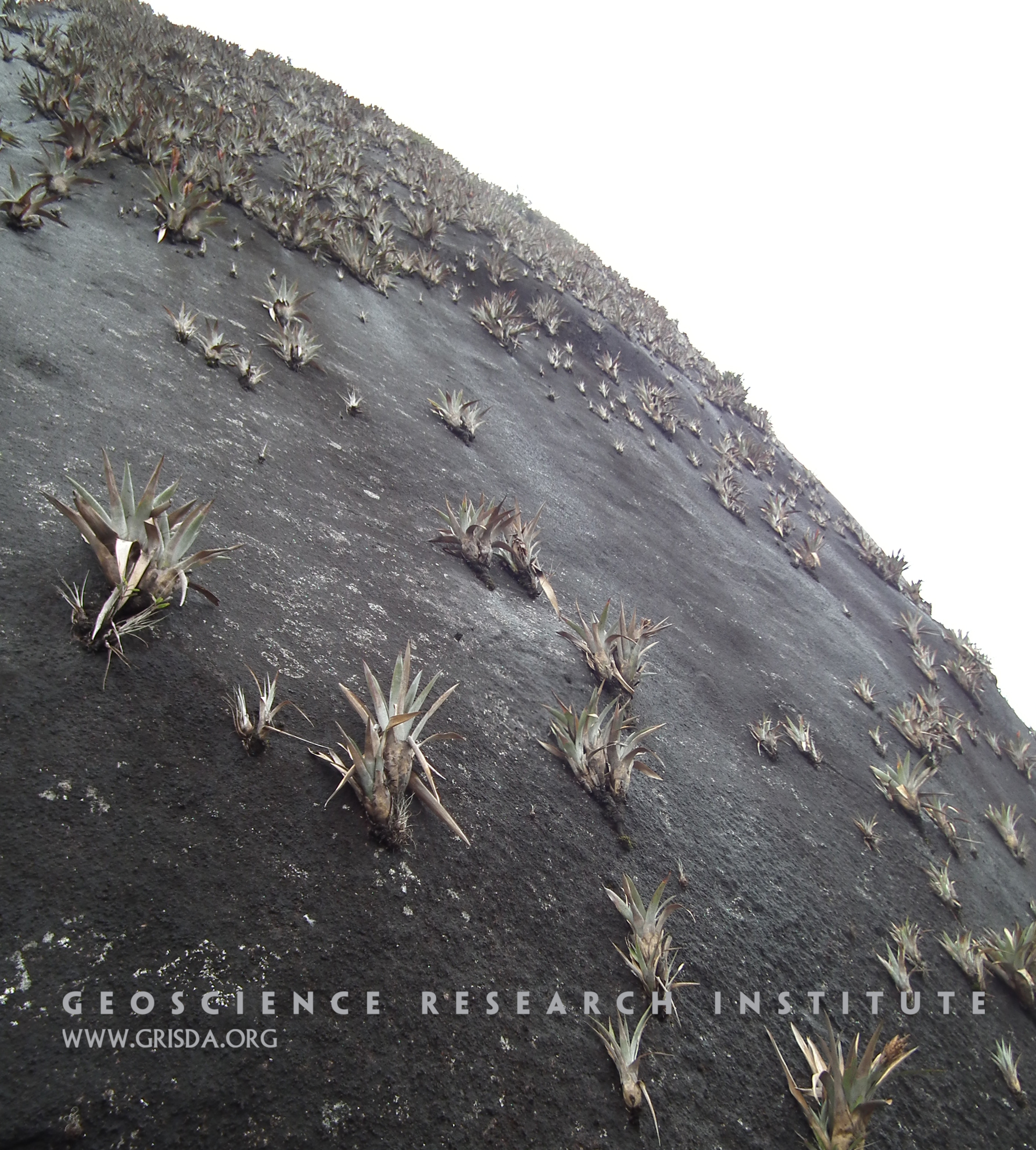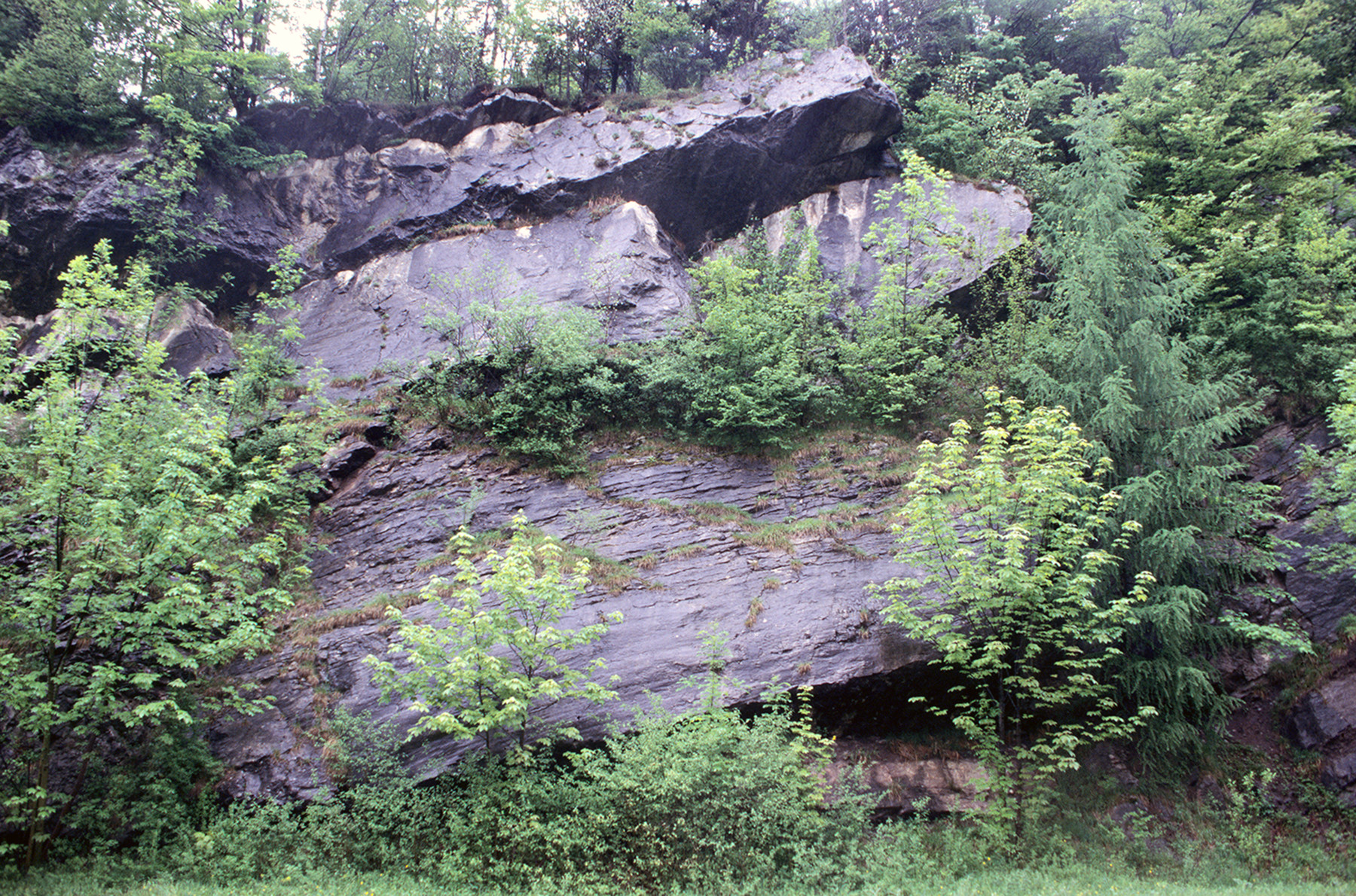©Copyright 2018 GEOSCIENCE RESEARCH INSTITUTE
11060 Campus Street • Loma Linda, California 92350 • 909-558-4548

Pebbly layer
Elongated pebbles concentrated at the base of a sandstone bed. Some pebbles show evidence of boring. They probably were transported during a sediment gravity flow from shallower to deeper marine settings. Photo taken along the Quebrada Morochata, Bolivia.
Antarctosuchus
This relatively complete skull of an amphibian was excavated from Mid-Triassic layers of the Transantarctic Mountains, in Antarctica. It's fascinating to see that this large landmass mostly covered in ice contains a fossil record indicative of very different conditions than the present glacial environment. Specimen, about half meter in size, on display at The Chicago Field Museum of Natural History.
Epiphytic plants
Epiphytic plants growing on a sheer vertical granitic wall of El Peñón de Guatapé, a rock formation in the region of Antioquia, Colombia.
Lofer Cyclothems
Cyclothems are sequences of deposits interpreted as alternating between marine and terrestrial. The sediments in the photo are composed of Triassic limestones of the Dachstein Formation at Pass Lueg, Austria. For more details, see the Introduction to this gallery.
Red Rocks Park Amphitheater
Red Rocks Amphitheater, west Denver --- Tilted layers of Fountain Formation are sand and conglomerate deposited from erosion of the ancestral Rocky Mountains.
Torotoro syncline
Dinosaur footprints in the town of Torotoro. Torotoro is located in a valley formed by synclinal folding of sedimentary layers, forming a U-shaped regional structure. In the distance, one of the sides of the syncline can be seen, and the other occupies the bottom part of the photo, where the footprints are exposed
Marine iguana
The Galapagos marine iguana ( Amblyrhynchus cristatus) is a reptile that is found exclusively on these islands and that feeds on algae. It can stay submerged up to a depth of 9 m, although it usually feeds in the intertidal coastal zone.
Cerro-Blanco
Cerro Blanco seen from the outskirts of the town of Ocucaje, Peru. These hills consist of layers of sandy, clay and diatomaceous sediments that contain fossils of marine vertebrates.
Benthic foraminifers
Thin section microphotograph (in plane parallel light) of a fine-grained, mixed siliciclastic-carbonate sandstone from Pliocene strata of the Sorbas Basin, Spain, containing tests of miliolid benthic foraminifers.
Icaronycteris index
Bats are an example of abrupt appearance in the fossils record, without much subsequent modification of their body plan. This exquisitely preserved and articulated specimen (about 15 cm in size) is on display at the Field Museum of Natural History, Chicago, and comes from Eocene strata of Fossil Lake Basin, Wyoming.
Hartebeest
It is tempting to think that all the action in the savannah is going on with the abundant large mammals, but the anthill reveals that there is another unseen world underground; a world of unexpected dynamism that interacts with what is happening on the surface. Hartebeest love to perch on top of these anthills and this behavior reminds us that nature tends to be interconnected. Photo taken in Masai Mara, Kenya.










